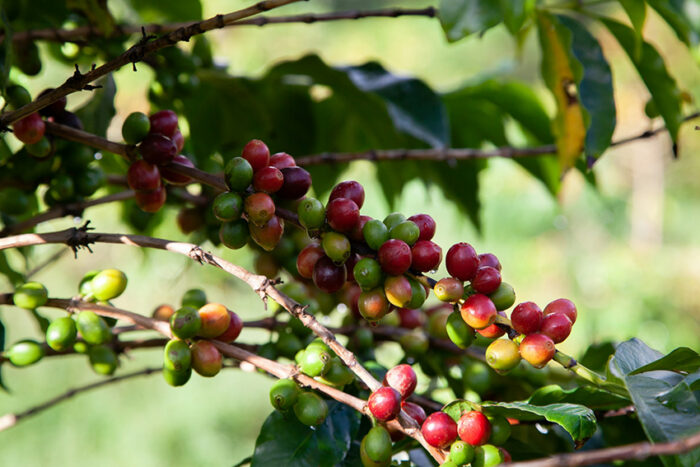Global coffee prices are reaching new heights, with arabica beans rising to a record of $3.44 a pound on Dec. 12 as extreme weather causes what some fear may become the new normal.
Drought in Brazil, the world’s largest coffee producer, and Vietnam, the second-largest, is tightening global coffee supplies and inflating prices. For arabica coffee, the price has surged more than 80% year-on-year, while robusta increased by about 100% year-on-year in October and was still up 85% in November.
Coffee brands like Douwe Egberts, Nestlé, and Lavazza have traditionally been slow to pass on price rises to consumers, preferring to maintain market share, but now these and other market movers say coffee is likely to cost more in the supermarket next year, according to BBC.
The crisis is driving innovation in the coffee industry, with climate-resilient coffee varieties, blockchain tracking, and new logistics offering hope of market resilience in the long term. In the short term, costlier coffee is on the menu.
The last time prices were close to this level was 1977, following a killing frost in Brazil.
This time the increase could be more permanent. Although the current rise in coffee price is fueled by multiple factors, including greater demand from Asian markets, the most concerning factor is the extreme weather that some fear will continue to be a global problem due to uncertainties of climate change.
The extent of the challenge is made clear by a look at the top three coffee-growing countries.
Brazil: Drought and wildfires
Brazil produces about 40% of the world’s coffee and is the main producer of arabica, the most popular kind of coffee. The country is grappling with its worst drought in over 70 years.
This is the fourth year in a row of lower-than-expected coffee harvests in Brazil caused by adverse weather, The Wall Street Journal reports, and this year losses due to drought are compounded by high temperatures and wildfires.
Farmers in Brazil told the AP of losing 15% of their harvest this year. The country’s coffee crop is under threat as the drought continues, with concerns mounting for the 2025/2026 harvest season.
Meanwhile, devastating wildfires destroyed thousands of hectares of Brazilian coffee plantations, causing further economic strain for farmers and wiping out some crops entirely, AP reports.
The higher prices worldwide have encouraged a boost in Brazil’s exports. By November, Brazilian producers had shipped a total of 46.399 million bags of coffee, “3.78% more than the highest volume recorded so far—44.707 million bags over the 12 months of 2020,” according to news agency Agência Brasil.
But the export increase following several years of poor harvest is only possible by selling down stockpiles, which will increase the risk of future global supply shocks. Should climate-related harvest problems persist for the world’s largest coffee producer, prices are likely to stay high.
Vietnam: Getting innovative
In Vietnam, the second-largest coffee producer, and the largest producer of robusta, growers have been hit by the worst drought in nearly a decade, with forecasts of a 10-16% fall in output for the coming harvest, but recent rains have improved the outlook, according to Reuters.
Farmers had already been working to recover from the drought.
“Rising coffee prices have motivated farmers to increase investments in coffee farming, helping recovery from the early summer drought this year and reducing harvest and post-harvest loss,” according to the latest U.S. Department of Agriculture (USDA) report on Vietnam, released Dec. 6.
Farmers in Vietnam are also seeking to use innovative practices to address rising temperatures, from paying more attention to ground cover and softening soil to capture more rain, to letting trees get older so their roots are deeper, Reuters reports.
Vietnam’s coffee exports are expected to rebound in marketing year 2024/25 after dropping in marketing year 2023/24, USDA says.
Colombia’s Resilience
In Colombia, the third largest producer worldwide, the coffee industry is showing signs of resilience. The country’s coffee production for the 2024/25 season is projected at 12.9 million bags—a modest increase of 1.1% over the previous year.
Colombian farmers’ success can be attributed to the adoption of rust-resistant coffee varieties and improved farming practices, both of which are helping to mitigate some of the climate challenges that have plagued the region in recent years, according to the USDA.
Colombia’s coffee exports have remained steady, with the U.S., its leading importer, accounting for 40% of the market share. China’s imports of Colombian coffee soaring 246% year-on-year between October 2023 to August 2024, USDA says.
As part of efforts to support its coffee farmers, Colombia has implemented initiatives like the Coffee Income Compensation Mechanism and a $12 million fund aimed at mitigating the impacts of El Niño, according to USDA.














